الـواحــة الطلابيــة للجـامعــة الوطنيــة الخـاصــة
Student Oasis of Al-Wataniya Private University
Research seminar title: Laser in dentistry
Faculty of Dentistry research seminars

Student preparation
Mahmoud Kendakjiey
Supervision:
Dr. Alaa Nassif
- Faculty of Dentistry research seminars
- Dentistry
- Pharmacy
- Engineering (informatics and communications)
- Civil engineering
- Architecture and urban planning
- Administrative and financial sciences
The Early days of Laser Medicine :
The history of medical lasers dates back to the 1960s when the first lasers were invented. In 1960, Theodore H. Maiman developed the first laser, which used a ruby crystal to produce a beam of red light. Shortly after, other types of lasers, such as gas and semiconductor, were developed, and researchers began exploring their potential applications in medicine.
Throughout the 1960s and 1970s, researchers and physicians continued exploring lasers in medicine, developing new techniques for surgery, dermatology, dentistry, and other fields. Finally, In 1973, the carbon dioxide laser was developed, which became the first widely used medical laser. Carbon dioxide lasers were used for a variety of procedures, including the removal of skin lesions, the treatment of acne scars, and the removal of tumours
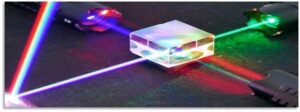
Pic (1): Laser beam
Laser in dentistry :
Laser dentistry Is still developing, but it’s fast becoming an invaluable part of modern dental treatment. We’re impressed by dental lasers, and our patients that have experienced laser treatment are, too. The benefits offered by dental lasers improve the patient experience and even promise more effective treatment results. While many lasers are still in development and research is ongoing, understanding the path medical lasers have taken thus far will help illustrate how far they’ve come.
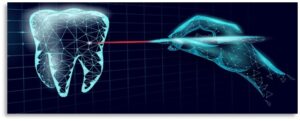
Pic (2)
: Uses of laser dentistry
- Tissue removals
- Gum exposures
- Cavities and sensitivity
- Root canal procedures
- Wisdom tooth removal
- Laser teeth whitening
- Gum and soft tissue infections
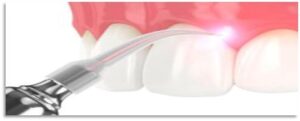
Pic(3):Laser gum treatment
Type of lasers :
Two types of lasers are used in dentistry based on their applicability:
- Hard tissue lasers
- Soft tissue lasers
- Hard tissue lasers: These cut through the hard structures of the oral cavity like the bone, tooth, etc.
- Mostly used in procedures like tooth fillings, removals, and treatment for teeth sensitivity.
- Soft tissue lasers: These cut and penetrate through the gums and oral membranes.
- Mostly used for killing microorganisms and initiating the re-growth, re-
- shaping of gums, and tongue procedures
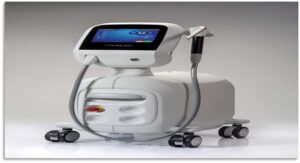
Pic(4):Hard tissue laser
Benefits of Laser Dentistry:
Dentists choose laser dentistry because of distinct benefits:
- make the procedures go more smoothly
- and also reduce discomfort and healing time for patients
- Patients are less likely to require sutures
- Anesthesia may not be necessary
- The laser will sterilize the gums, making infection less likely
- Less damage to gums shortens the healing time
- Patients lose less blood than traditional surgery
Disadvantages of using dental lasers:
- Lasers can’t be used on teeth that already have certain types of filling, such as metal amalgam.
- Hard lasers can sometimes injure tooth pulp.
- Some laser procedures still require anesthesia.
- Drills are still sometimes needed to complete fillings, including shaping, adjusting the bite, and polishing the filling.
- Certain procedures can’t be done with laser treatment, depending on the preexisting surrounding tissue or components involving the tooth or gums.
- There is a risk of gum injury.
What risks are associated with laser dentistry?
- The risks of laser dentistry are relatively small. It’s important to find a qualified dental professional, as using the wrong wavelength or power level could damage tissue.
- Some dental professionals worry that advertisers are pushing the use of laser treatment beyond what people actually need.
- Your dentist will have you use special glasses to protect your eyes from the laser
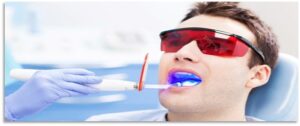
Pic(5):The special classes
Is Laser Dental Treatment Painless ?
Most laser procedures do not require local anesthesia. This is becausee it involves lesser vibration and no pain.
Hence in comparison to traditional technology, lasers are more convenient and comfortable for patients
Can dental lasers be used for kids ?
Dental lasers can be used for children, though It’s not as commonplace as It is for adults
The American Academy of Pediatric Dentistry recognizes that this Is a complementary tool that can benefit kids, though It points out that pediatric dentists need more training to use this method. It applies to infants, children, teens, and adults with special healthcare needs
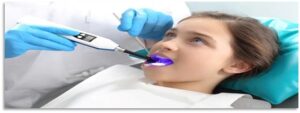
Pic(6)
Resources :
- dentavacation.com
- healthline.com
- 123dentist.com
- www.openmedscience.com
- cherrywood-dental.com
- techtarget.com
-
Share
-
Share
-
Share
Al-Wataniya Private University
Related sites:
To contact:
- Syria - Hama - (Homs-Hama) Highway
- 0096334589094
- 00963335033
- info@wpu.edu.sy